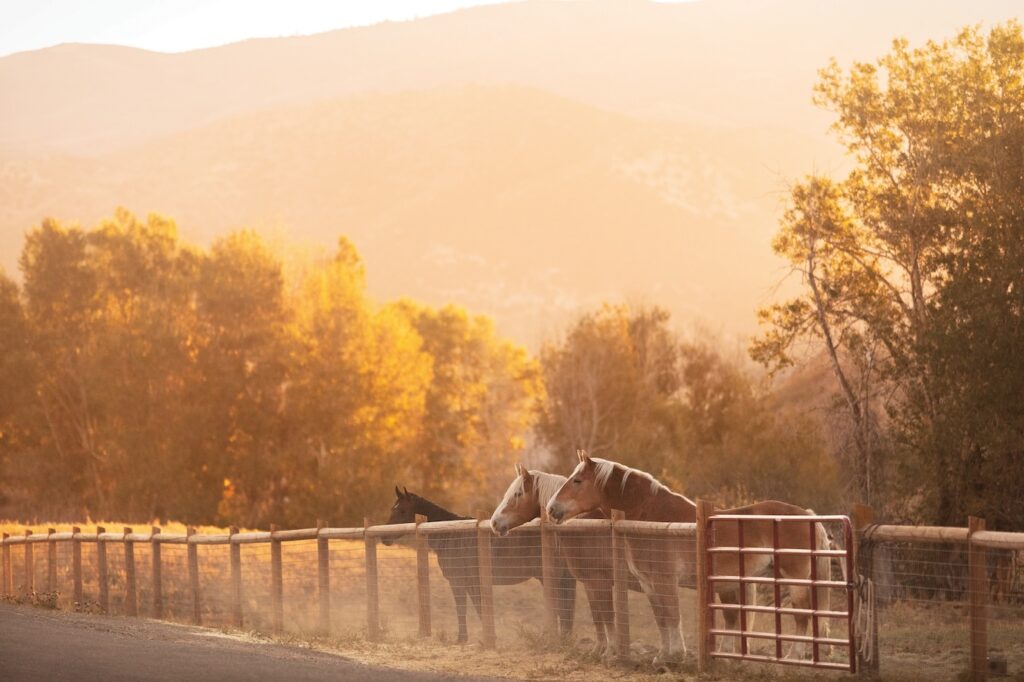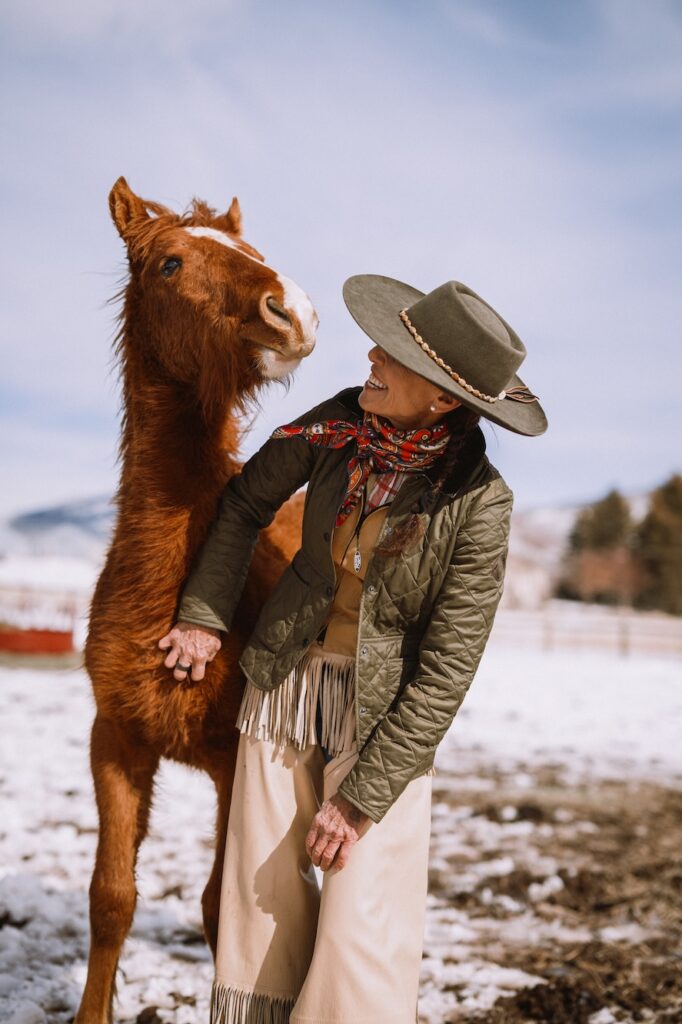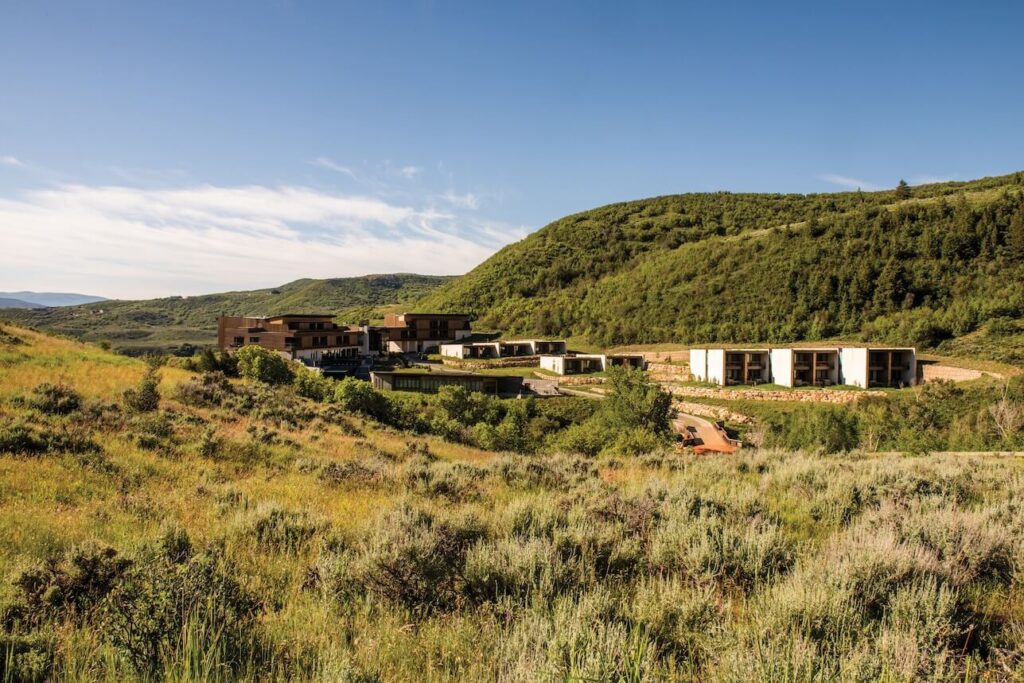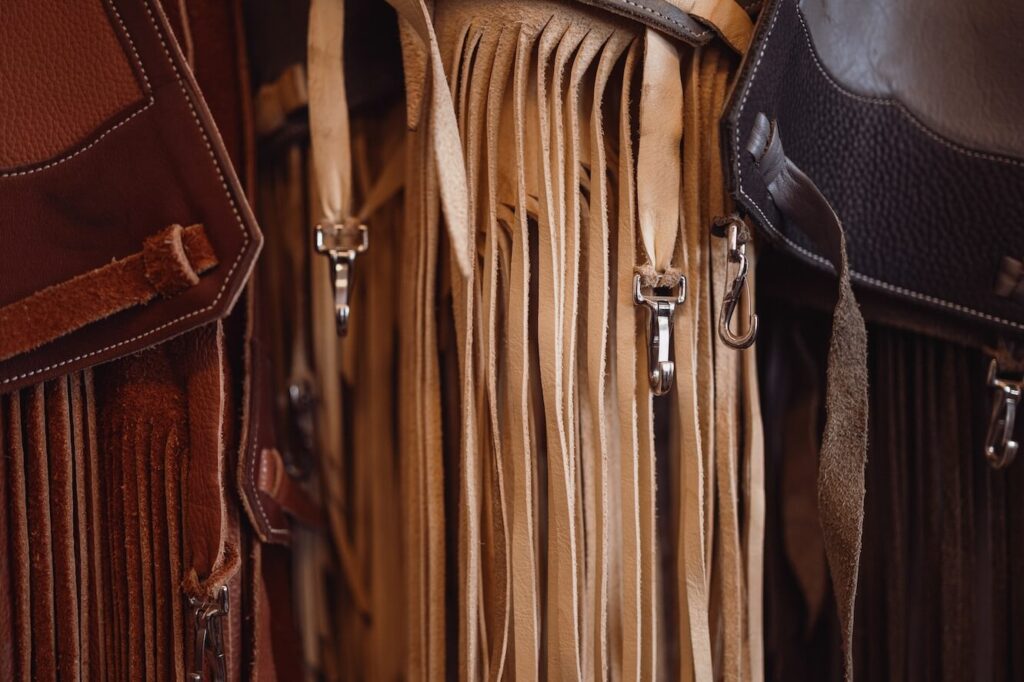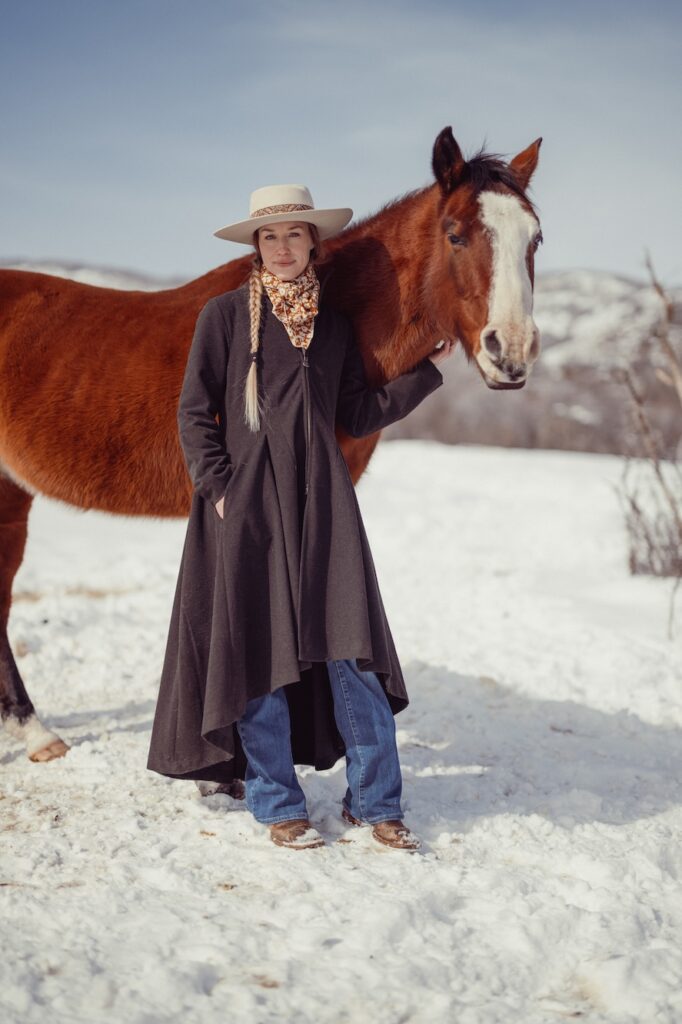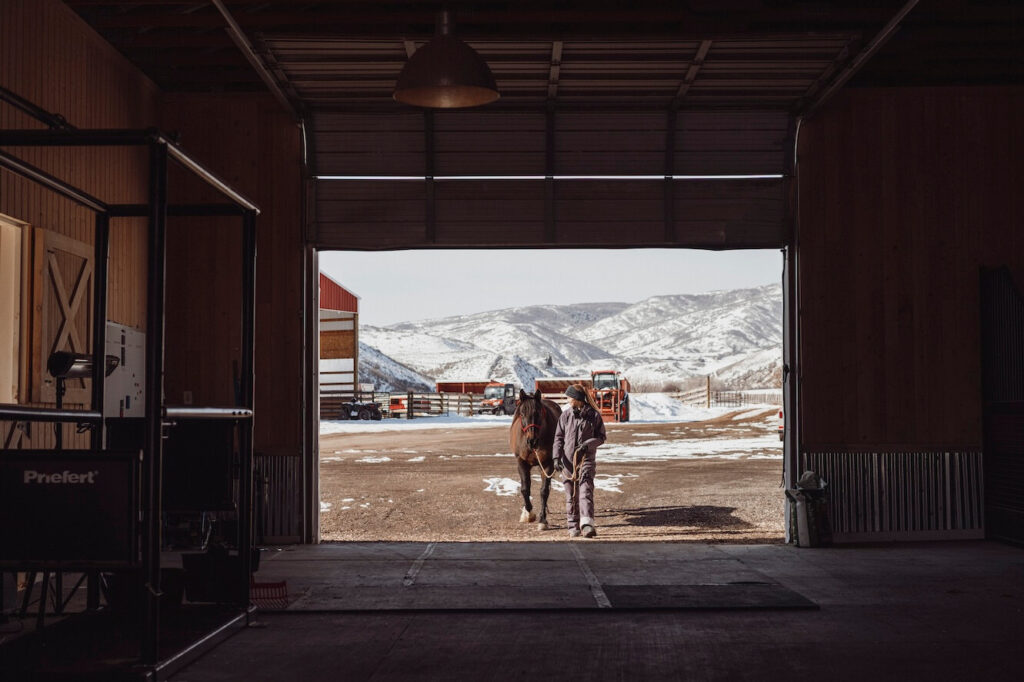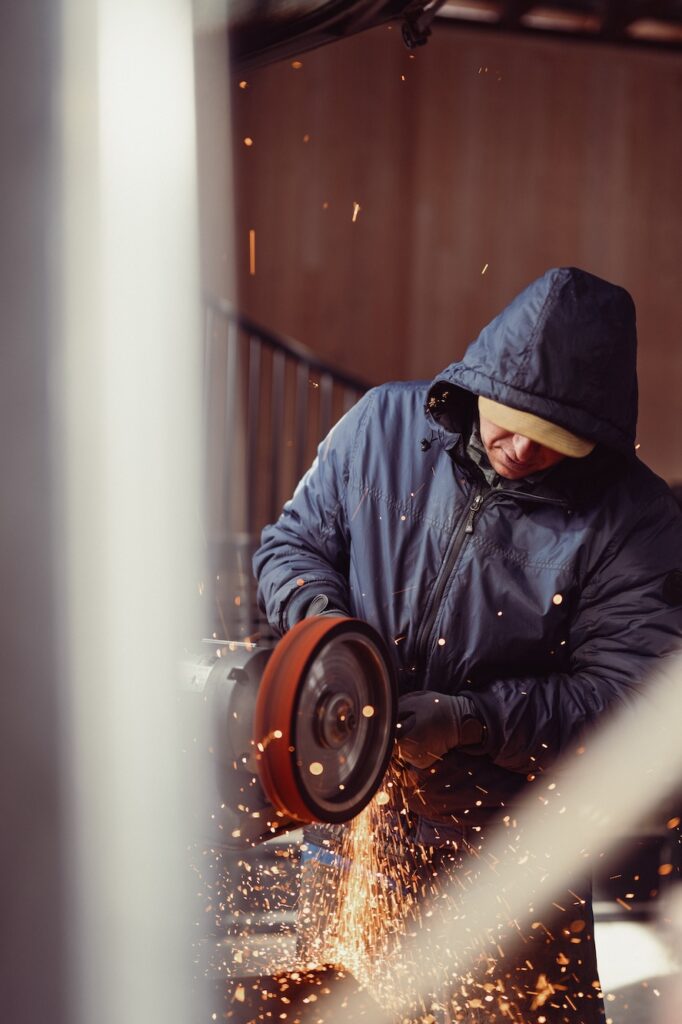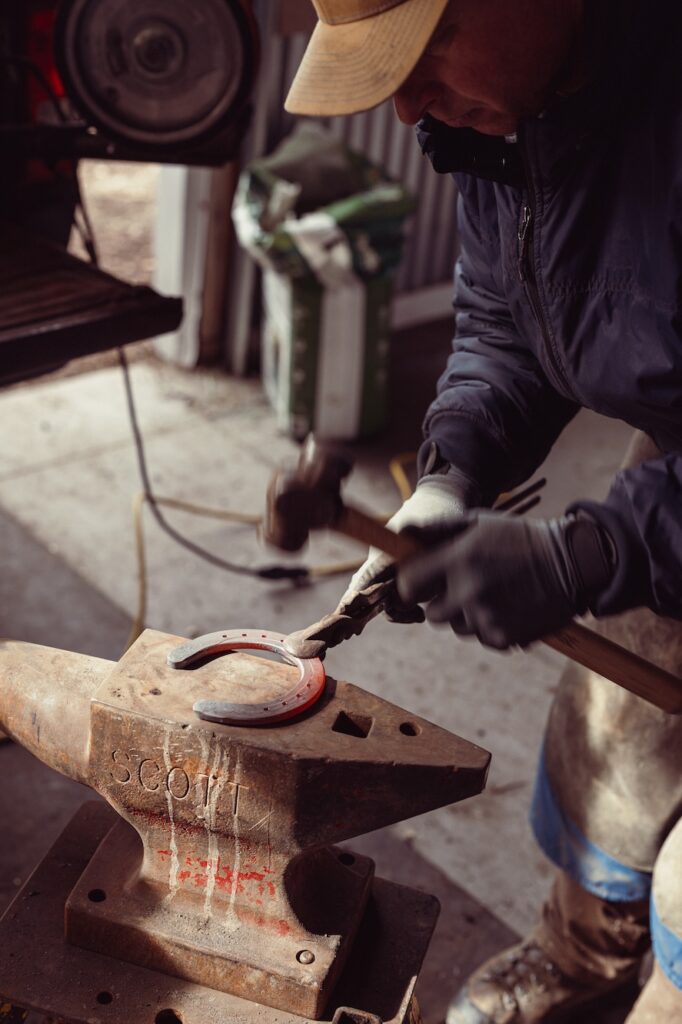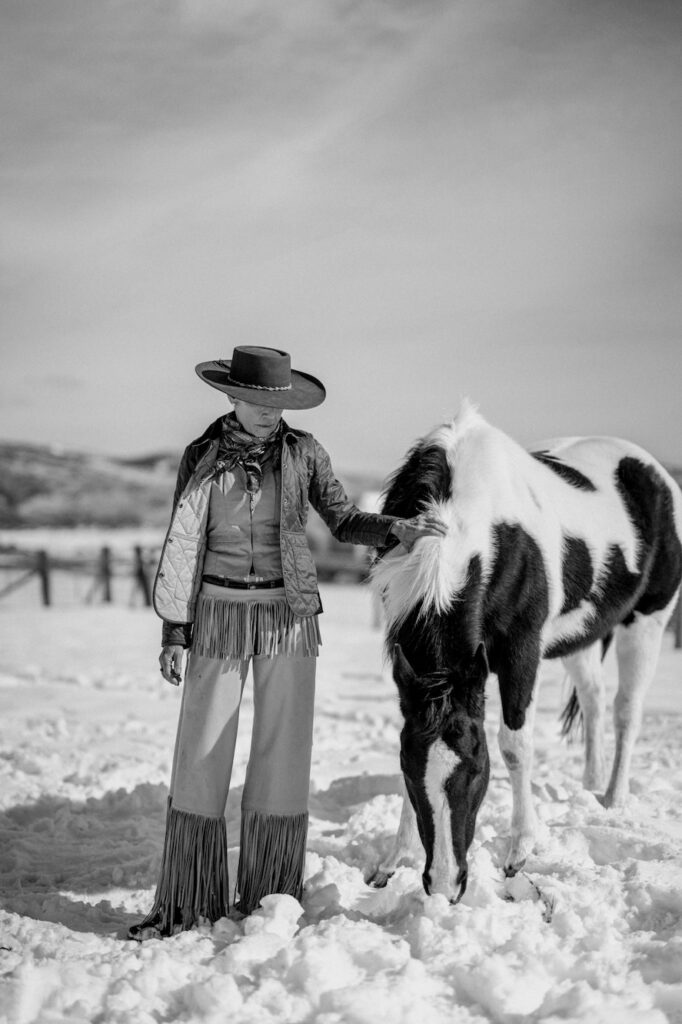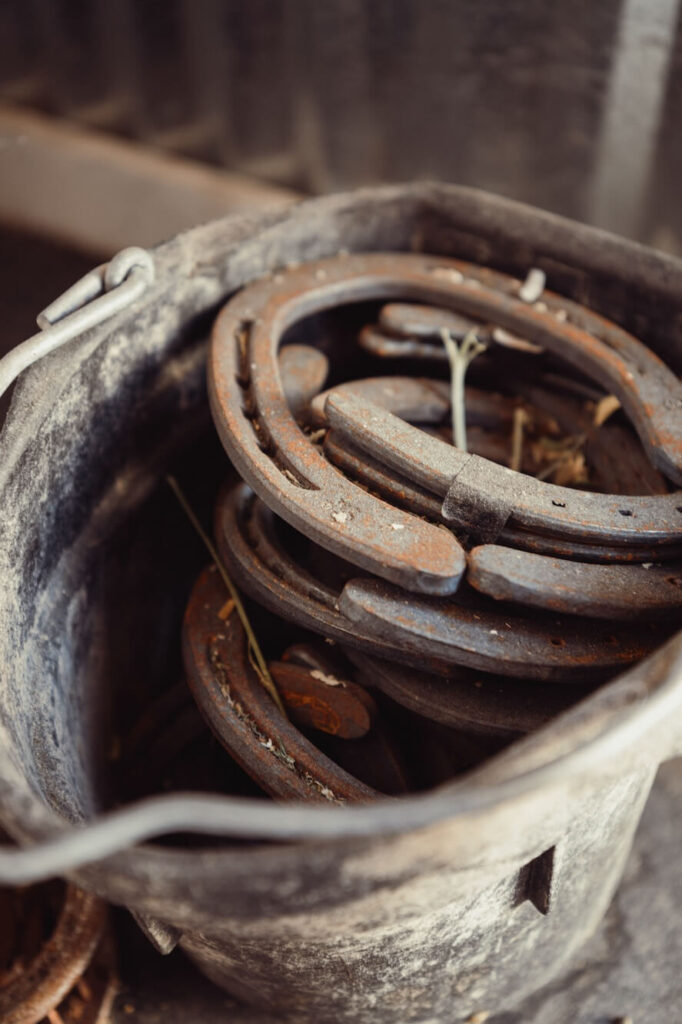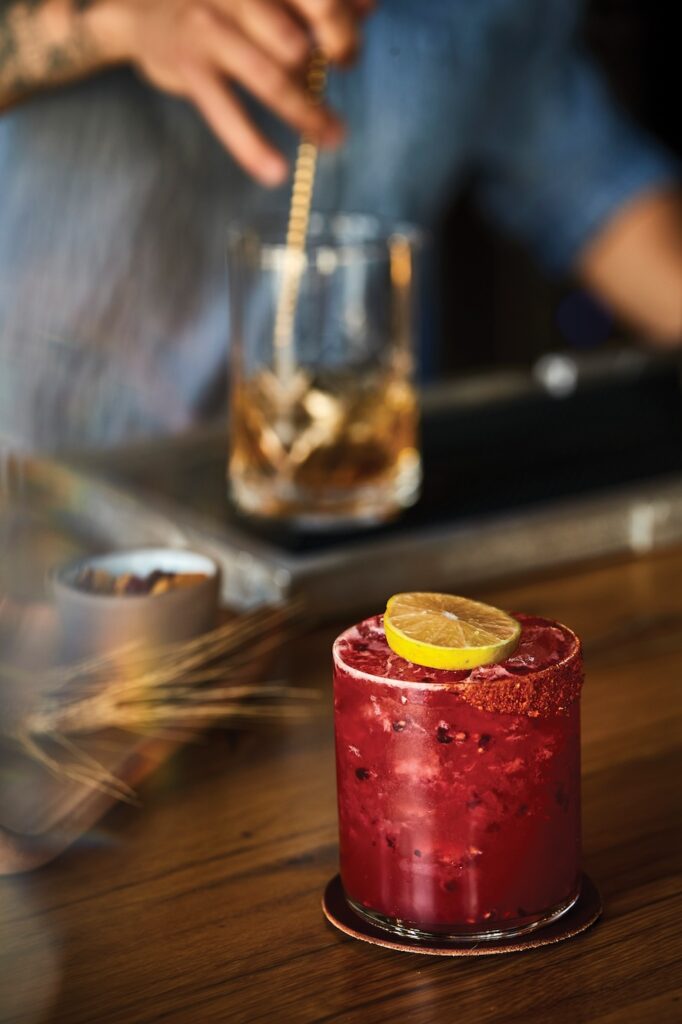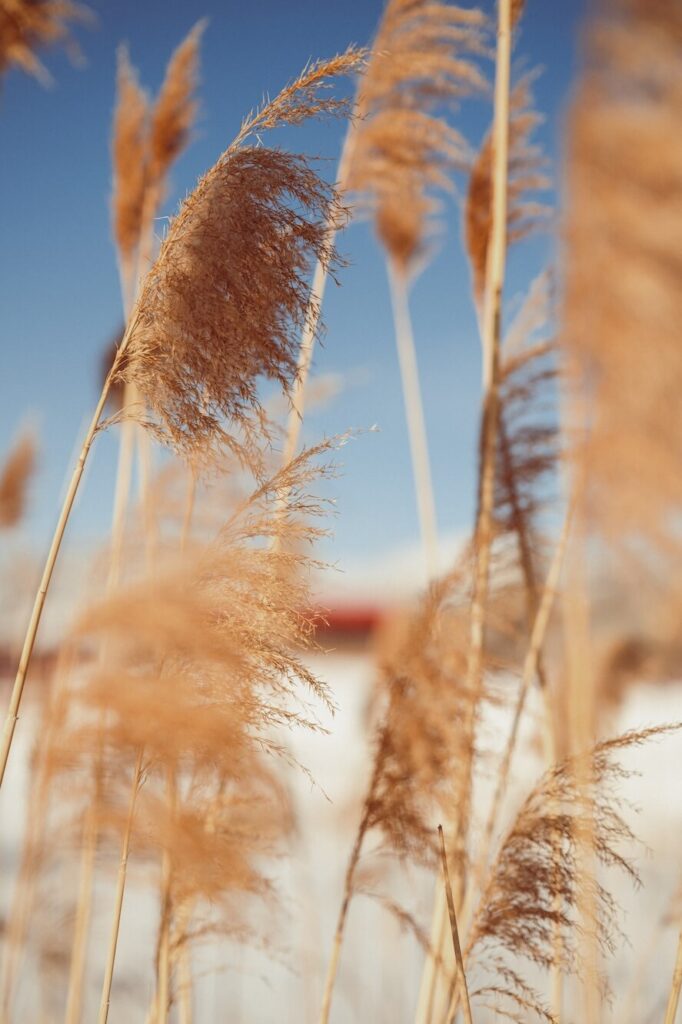The story is now legend. The origin of how Barb Phillips, respected business owner and model citizen, became The Horse Thief. How, upon discovering abused and neglected horses on a ranch near The Lodge at Blue Sky, Auberge Resorts Collection vast 3,500-acre remote luxury retreat paradise she co-owns with her husband Mike in Wanship, Utah, just outside Park City—she took it upon herself to deliver hay and water to the roughly 100 traumatized and starving animals. How one in particular, Gracie, stirred something in her so deeply it altered the course of her life and work.

The year was 2013, and though she’d always been an animal lover, she wouldn’t say she was “a horse person.” She’d just begun to learn about the powerful and gentle creatures then, through her work with them at Blue Sky.
Still, upon seeing a local news segment on the abused horses nearby, she felt compelled to act—“I just had this feeling, like, ‘I’m in a position where I think I can make a difference,’” she says on a recent sunny Utah day, standing in one of the snow-covered fields at Blue Sky, reflecting. “I want to figure out how to do that.”

She had Gracie—one of the worst off—trailered to a nearby vet at her own personal expense. Released from a doctor’s care, Barb understood Gracie’s dark fate if she were to return back to the place that was responsible for her condition to begin with. She wouldn’t let it happen.
Even under the threat of jail.
That initial rescue opened Barb’s eyes to what, she learned to her horror, is an all-too-common problem: “Not only just animal neglect and abuse, but in particular, with horses,” she says.
Gracie was but the tip of the iceberg. “Especially when you’re confronted with something like that for the first time, it’s easy to feel overwhelmed,” says Barb.
To combat the giant task at hand, Barb adopted a mantra that became a mission statement. Just as a journey of a thousand miles begins with one step, the task of healing broken and abused horses would be done “One horse at a time.”

Gracie is now the namesake of what has grown into the Saving Gracie Equine Healing Foundation and Gracie’s Farm on the property at Blue Sky, which includes The Lodge and a state-of-the art Remuda—a stunning 36,000-square-foot riding arena with sweeping views of the Wasatch and Uinta mountains through its large windows. Blue Sky began, says Barb, with its equine program, the mission of which was to teach visitors of the area about the history of the land, its people and animals, through working with horses on trail rides and other activities. Saving Gracie was a natural extension of that effort.

“I saw how physically and emotionally damaged these horses were,” says Barb. “And I felt like it was really important to deal with that and not just give them a different place to live away from danger, but to work on trying to get them to a healthier place.”
When Gracie arrived at Blue Sky, she was “uncatchable, unrideable, not friendly,” says Barb, a result of the trauma she’d experienced in her life. “She’s overcome a lot of that.”

In the decade-plus since that news story, dozens of horses have arrived at Saving Gracie, each to a suite of diagnostic and therapeutic tools to help heal their emotional and physical scars. For the latter, the Foundation has top-shelf lab and veterinary equipment—an X-ray machine, a centrifuge to spin a horse’s blood for testing and to extract Platelet Rich Plasma (PRP) to aid in the healing of arthritis. There’s also an ultrasound, lasers, and an array of wellness treatments tailored to each animal. The horses receive top-of-the-line dental care. There’s a full-time farrier on site who makes custom horseshoes for the animals, their hooves often in particularly bad shape when they arrive. The Foundation has an on-staff veterinarian and two vet techs.

In short, each and every horse on property receives what’s known as “the Gold Standard of Care,” which is the goal of all clinics and vets, but is sometimes not an option due to the exorbitant cost. Sometimes, the horse owners simply can’t afford it.
This is partly what makes Saving Gracie different from many other horse rescues. It is a medical rehabilitation rescue with everything it could possibly need in that regard on site.
Rescue, recovery and rehabilitation are the goals at Saving Gracie. One “R” that’s missing is one more common at other rescues—“re-home.”
“A lot of our horses aren’t re-homeable due to their medical conditions, and since we have our own vet we are able to take on those more difficult cases,” says Melissa Smolik, Director at Saving Gracie.
Upon intake the horses’ physical and emotional states are given an assessment, and a rehab plan is put into action. The rehab starts with grooming every morning. Every horse gets their own special bucket of grain each day with a customized blend of supplements. “A lot of training goes into it as well,” says Smolik.
At Saving Gracie, most of the horses can’t be ridden. It makes no difference. Where, at other rescues, donations may cover the day-to-day, Saving Gracie has “this advantage of being part of an organization [The Lodge at Blue Sky] that is a business, that does trail rides, that gives guest lessons [on different horses who haven’t been rescued]. So I can piggyback off of that,” says Barb.

Piggybacking off the business of The Lodge at Blue Sky—which features a giant photo portrait of Gracie by Patrick Brandenburg in its lobby and a cocktail, “The Horse Thief,” on its bar menu, proceeds from the purchase of which support the Foundation—means not having to choose which horse receives care and which doesn’t. “I don’t say, ‘Well, you get this treatment because you’re a working horse, and you don’t because you’re a rescue horse.’ I don’t do that,” says Barb. “If a horse needs surgery, and all they are is retired and hanging out, they still get the surgery. We’re just trying to give them the best life. The Lodge drives everything else.

Most of the rescued horses arrive to Saving Gracie via tips to Barb from various sources. Nearly all are in some state of physical duress, most commonly arthritis. Still others have navicular syndrome, a complex condition that causes heel pain and lameness in the horse. Some suffer from rashes or skin conditions. Open wounds aren’t uncommon. Aside from the significant expense, the physical injuries the rescued horses come to Saving Gracie with are fairly easy to tackle. It’s the psychological scars that take the most time to heal.
“A lot of them come in with a lot of trauma, so we just let them lead the way with what they’re ready for,” says Smolik. “With some horses it can take years for them to let their guard down.”

Recently the number of horses wanting Barb’s attention grew by a factor of eight. In December she received a tip about a group of “50 babies” headed to a kill pen in Texas. Again, her instinct to act kicked in, this time even in the face of her “one horse at a time” mission statement. She agreed, at first, to take on six. That grew.
The Lucky 8, as they’ve come to be called, now live on Barb’s own property, some 30 minutes from Saving Gracie. They arrived as many do, untrusting and fearful. In just a few short months, that’s begun to change, and both Barb and Smolik have seen encouraging signs.
The Horse Thief Cocktail Recipe
Created by the bar staff at The Lodge at Blue Sky, this spicy aperitif was inspired by its owner, Barb, and her courage.
Ingredients
1.5 oz Reposado Tequila
0.5 oz Green Chartreuse
0.5 oz High West Campfire Whiskey
0.5 oz Lime Juice
0.5 oz Ginger Syrup
4-5 Blackberries
Recipe
Muddle blackberries in a shaker with ginger syrup.
Add remaining ingredients and ice. Shake to chill.
Half rim a rocks glass with Tajin spice.
Pour into glass and garnish with a lemon wheel.


